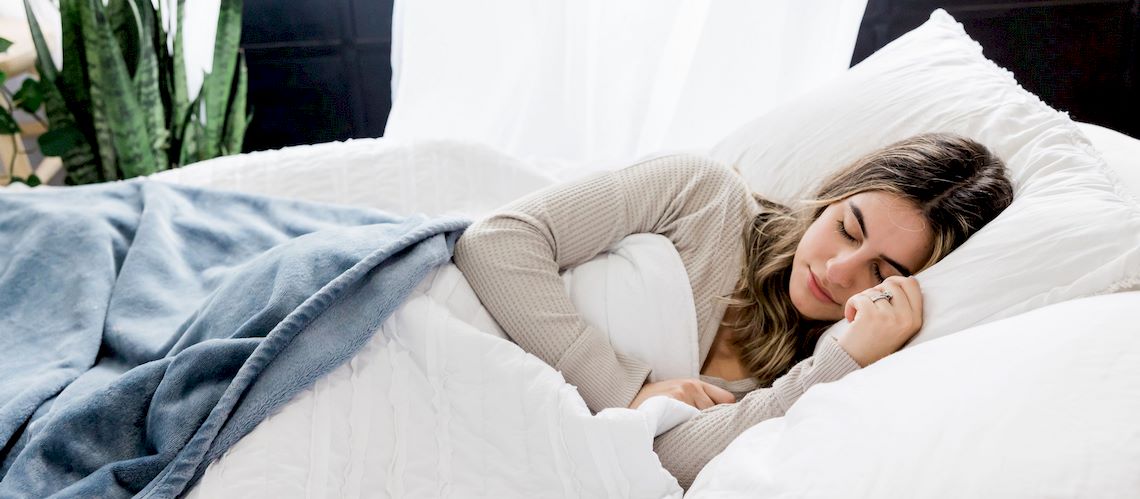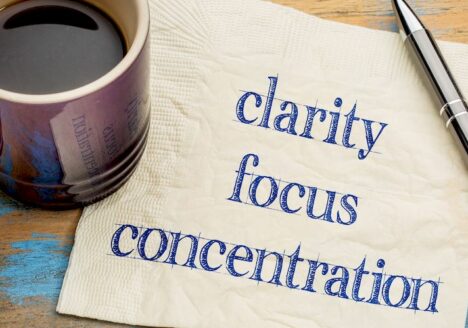Weighted blankets have garnered attention as a compelling, non-pharmacological solution for improving sleep and reducing stress, underpinned by the principles of Deep Pressure Therapy (DPT). This gentle, consistent pressure is more than just comforting; it activates measurable physiological and psychological responses that promote relaxation and rest. Grounded in robust research, weighted blankets have demonstrated benefits across diverse populations, from children with ADHD to healthy adults seeking better sleep. This article delves into their mechanisms, scientific validation, and practical applications, presenting an eloquent and comprehensive view of their transformative potential.
Deep Pressure Therapy: The Foundation of Weighted Blankets
The effectiveness of weighted blankets is rooted in Deep Pressure Therapy (DPT), a technique that applies even, calming pressure across the body. This stimulation triggers the parasympathetic nervous system, responsible for “rest and digest” functions, while suppressing the stress-driven sympathetic nervous system (Aslam, 2023). The result is a slower heart rate, reduced cortisol levels, and a profound sense of calm, setting the stage for restorative sleep.
The psychological dimension of this therapy is equally significant. Aslam (2023) compares the gentle weight of the blanket to the sensation of a hug, which can release oxytocin, a hormone linked to emotional connection and safety. By creating a comforting environment, weighted blankets help ease pre-sleep anxiety, paving the way for quicker sleep onset and improved sleep quality.
These calming effects are not merely theoretical. Meth (2024) conducted a controlled study showing that the use of weighted blankets increased pre-sleep melatonin levels by approximately 30% in healthy adults. Melatonin is central to regulating the sleep-wake cycle, and this hormonal shift underscores the biological underpinnings of weighted blankets’ benefits. Notably, this effect was specific to melatonin, with no significant changes observed in cortisol or oxytocin levels, reflecting the precise physiological impact of the therapy.
Scientific Evidence Across Diverse Populations
The benefits of weighted blankets extend beyond anecdotal experiences, supported by rigorous studies across clinical and non-clinical groups. Ekholm et al. (2020) demonstrated their effectiveness in individuals with psychiatric disorders, including major depressive disorder and generalized anxiety disorder. In this randomized controlled trial, participants experienced improvements in sleep maintenance, reduced symptoms of fatigue, and alleviation of anxiety. These findings establish weighted blankets as a credible intervention for managing sleep issues in vulnerable populations.
Children with Attention Deficit Hyperactivity Disorder (ADHD) represent another group that has benefited from this intervention. Larsson et al. (2022) developed a controlled trial protocol exploring the impact of weighted blankets on sleep quality and daytime functioning in children with ADHD. Preliminary results suggest marked improvements in both areas, highlighting the potential of weighted blankets to address sleep disturbances and enhance overall well-being in younger demographics.
In addition to these populations, Edwards (2024) explored the feasibility of integrating weighted blankets into recovery routines for individuals with brain injuries. This study found that weighted blankets were effective in reducing agitation and improving sleep quality during recovery, particularly in high-stress environments. These findings underscore the adaptability of weighted blankets, demonstrating their utility not only for general well-being but also for supporting recovery in specific therapeutic contexts.
Importantly, the benefits of weighted blankets are not confined to clinical populations. Eron et al. (2020) conducted a systematic review emphasizing their efficacy in reducing anxiety and enhancing sleep quality for healthy individuals. By bridging the gap between therapeutic and general wellness applications, weighted blankets have become a versatile tool for holistic well-being.
Subjective and Objective Evidence: A Balanced Perspective
The therapeutic potential of weighted blankets is reinforced by both subjective experiences and objective data. Lönn et al. (2023) conducted a qualitative study examining the experiences of children with ADHD who used weighted blankets. Participants described feelings of comfort and security, with reports of quicker sleep onset and fewer nighttime disturbances.
Objective data align with these testimonials. Lindholm et al. (2024) used actigraphy to quantify improvements, finding that weighted blankets increased total sleep time and reduced wakefulness after sleep onset in children with sleep challenges. These findings underscore the consistency of benefits across diverse measures, providing a well-rounded view of the impact of weighted blankets.
Yu et al. (2024) synthesized these findings in a broader review, concluding that weighted blankets are effective in promoting sleep and reducing stress. This review positions weighted blankets as an accessible and non-invasive tool for managing sleep and stress-related disorders.
Emotional Regulation: Beyond Sleep
The influence of weighted blankets extends beyond sleep to include significant emotional benefits. The gentle, even pressure they provide mimics the reassurance of being held, a sensation shown to stimulate oxytocin release (Aslam, 2023). This physiological response can be particularly beneficial for individuals experiencing chronic stress or heightened pre-sleep anxiety.
Yu et al. (2024) elaborates on this point, noting that the emotional stability facilitated by weighted blankets complements their physiological effects, making them a holistic solution for overall well-being. This dual impact is central to their appeal, especially for individuals seeking non-pharmacological strategies for stress management.
Practical Applications and Accessibility
To integrate weighted blankets effectively into a daily routine, careful selection is essential. Experts recommend choosing a blanket that weighs approximately 10-12% of one’s body weight to ensure optimal pressure (Eron et al., 2020). For newcomers, gradual acclimatization is advised—starting with shorter periods and progressively extending usage can help users adjust comfortably.
Larsson et al. (2022) found that participants, particularly children, overwhelmingly preferred weighted blankets to lighter alternatives due to their perceived effectiveness and comfort. This high satisfaction rate highlights the potential for long-term adherence, a critical factor in any therapeutic intervention’s success.
Weighted blankets are widely available in various weights and sizes, making them an accessible solution for most individuals. Consistent use as part of a nightly routine can amplify their benefits, creating a structured and calming pre-sleep ritual.
Conclusion: A Science-Backed Path to Restful Sleep and Resilience
Weighted blankets exemplify the harmony between science and simplicity, addressing both physical and psychological dimensions of well-being. Their ability to regulate melatonin levels, modulate nervous system activity, and foster emotional safety establishes them as a transformative tool for improving sleep and reducing stress.
The body of evidence supporting weighted blankets is robust and multifaceted. Ekholm et al. (2020) demonstrated their efficacy in clinical populations, while Yu et al. (2024) broadened their applicability to general wellness. Lönn et al. (2023) and Lindholm et al. (2024) provided complementary qualitative and quantitative insights, solidifying their role as an effective intervention for diverse groups.
For those seeking a natural, non-invasive method to enhance rest and resilience, weighted blankets offer a practical solution grounded in empirical evidence. Whether used to manage specific conditions or simply to improve nightly routines, they align seamlessly with the principles of holistic health. By integrating weighted blankets into daily life, individuals can take an informed and proactive step toward a more balanced and restorative existence.
References
Aslam, M. (2023). Weighted blanket therapy for periodic limb movement disorder: a case report highlighting improved sleep quality and reduced symptoms. Cureus. https://doi.org
Edwards, L. (2024). Feasibility of delivering a randomized controlled trial of weighted blanket intervention to help agitation and disturbed sleep after brain injury. Frontiers in Sleep, 3. https://doi.org
Ekholm, B., Spulber, Ş., & Adler, M. (2020). A randomized controlled study of weighted chain blankets for insomnia in psychiatric disorders. Journal of Clinical Sleep Medicine, 16(9), pp. 1567-1577. https://doi.org
Eron, K., Kohnert, L., Watters, A., Logan, C., Weisner-Rose, M., & Mehler, P. (2020). Weighted blanket use: a systematic review. American Journal of Occupational Therapy, 74(2), pp. 7402205010p1-7402205010p14. https://doi.org
Larsson, I., Aili, K., Nygren, J., Johansson, P., Jarbin, H., & Svedberg, P. (2022). Sleep: intervention with weighted blankets for children with attention deficit hyperactivity disorder (ADHD) and sleep problems: study protocol for a randomised control trial. BMJ Open, 12(1), e047509. https://doi.org
Lindholm, A. (2024). Sex differences in children with uncomplicated attention deficit/hyperactivity disorder and sleep problems. Children, 11(6), 636. https://doi.org
Lönn, M., Aili, K., Svedberg, P., Nygren, J., Jarbin, H., & Larsson, I. (2023). Experiences of using weighted blankets among children with ADHD and sleeping difficulties. Occupational Therapy International, 2023, pp. 1-12. https://doi.org
Meth, E. (2024). A weighted blanket increases pre-sleep salivary concentrations of melatonin in young, healthy adults. Sleep Medicine, 115, S246-S247. https://doi.org
Yu, J. (2024). The effect of weighted blankets on sleep and related disorders: a brief review. Frontiers in Psychiatry, 15. https://doi.org




